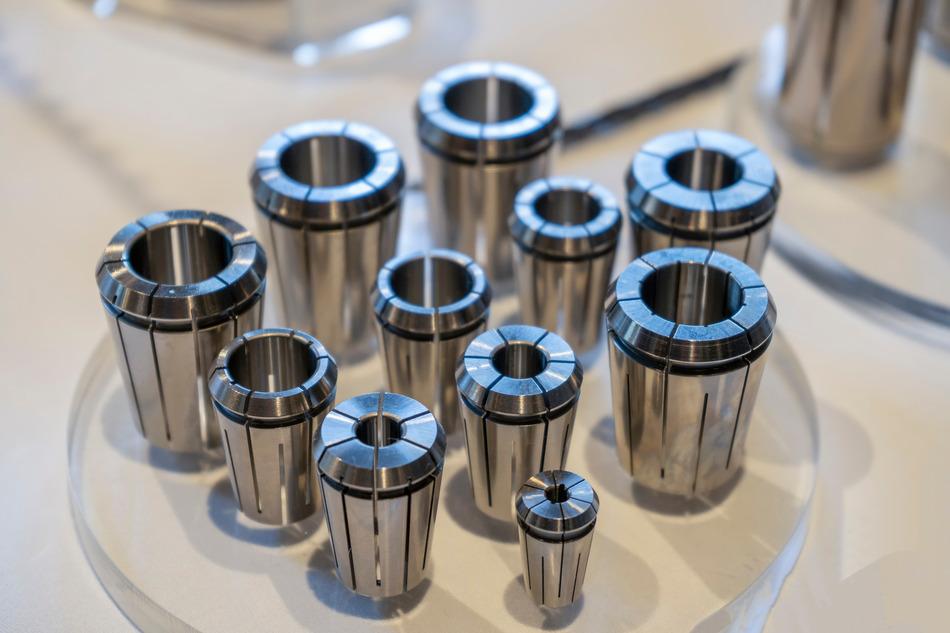The History of CNC Machining: Understanding Evolution
CNC machining is one of the most important tools in today’s manufacturing industry. It has changed the way parts and products are made, allowing for faster production and incredible precision. But CNC machining didn’t just appear overnight—it took decades of innovation to reach the advanced systems we see today. By exploring the history of CNC, we can see how this technology evolved from simple tools to highly complex machines that can produce parts with extreme accuracy.
The story of CNC machining is one of incredible progress, starting with simple manual tools and evolving into the advanced, computer-driven machines we see today. Pioneers like John T. Parsons and institutions like MIT made some of the earliest breakthroughs by developing numerical control (NC), a method that used coded instructions to control machines more precisely.
This breakthrough laid the groundwork for today’s CNC technology, which uses computers to guide machines automatically. When CNC computer numerical control machining was introduced in the 1970s, it changed the manufacturing world by making it possible to produce parts with amazing accuracy and at much faster speeds than ever before.
The Early Beginnings of Machine Tools
The history of CNC machining goes back to the Industrial Revolution, a time when machines started to play a bigger role in factories. In the early days, machines like lathes and mills were controlled manually, meaning workers had to operate them by hand. These machines were used to shape and cut materials, but they depended entirely on the skill and precision of the operator.
One early machine tool, the Swiss jig borer, was popular because it could create small, precise holes needed for watchmaking. However, as industries grew, companies needed more than just accuracy—they needed speed. It was clear that manufacturing processes had to evolve to meet the growing demands.
Early experiments in automation began, like using punched cards in textile machines to create patterns automatically. This idea of using codes to control machines laid the groundwork for what would later become numerical control (NC).
The Birth of Numerical Control (NC) in the 1940s-1950s
The journey toward full automation took a big leap forward during World War II, when factories needed to produce a large number of precise parts quickly. John T. Parsons, an engineer, noticed the need for more accurate parts for the aviation industry. He worked on a project to improve part-making by controlling machines with simple codes, rather than relying entirely on manual operation.
Parsons teamed up with researchers from the Massachusetts Institute of Technology (MIT), leading to the development of the Massachusetts Institute of Technology (MIT) in creating the first NC machines. This early version of NC used punched cards to store data and guide machine movements. Each card contained instructions, and the machine read these instructions to position its tools accurately. Although basic, this approach allowed machines to work faster and more precisely than ever before.
One key invention during this time was the motor-controlled apparatus for positioning machine tool, which used electric motors and a control system to move the machine’s parts. This machine even used a vacuum tube as part of its electronic system, showing how early technology combined mechanical and electronic parts. This “numerical control” was revolutionary, making it possible to create detailed, accurate parts without human error.
The Shift to Computer Numerical Control (CNC) in the 1970s
In the 1970s, computers became more advanced and began to replace punch card systems. This marked the start of CNC computer numerical control machining, which used computers to control machines. With computers, operators could now store and change programs on the machine itself, giving them more flexibility. Operators no longer needed to use a new punch card each time they required a different part.
Using a computer also allowed for faster adjustments, as operators could program complex shapes and designs directly into the machine. This technology made CNC milling machines possible, enabling them to cut, drill, and shape materials with greater speed and precision. CNC’s flexibility allowed for more creativity in design and let industries produce a variety of parts without reconfiguring machines manually.
One of the biggest advantages of CNC was that it could handle more complex tasks. With CNC technology, manufacturers could make parts with very detailed shapes and patterns. This was a big step forward, especially for industries like aerospace and automotive, which needed precise, high-quality components for their products.
The Development of CAD/CAM Software in the 1980s-1990s
As CNC technology continued to grow, the introduction of Computer-Aided Design (CAD) and Computer-Aided Manufacturing (CAM) software in the 1980s and 1990s took the history of CNC machining to the next level. CAD software allowed designers to create detailed 3D models on a computer, while CAM software could translate these models into instructions that CNC machines could follow. This was a huge improvement, as engineers could now test their designs digitally before making them, saving time and reducing mistakes.
With CAD/CAM, manufacturers could create incredibly precise parts because they could see and adjust their designs virtually. This combination of CAD/CAM also made it possible for CNC machines to work with more complex materials and designs. High quality became easier to achieve, as parts could be checked and modified in digital form before being physically created. This technology also reduced waste, as companies could plan their cuts more accurately and avoid errors.
Thanks to CAD/CAM, CNC machines became a critical part of the manufacturing process. They could now make parts with greater detail and accuracy, enabling industries like electronics, medical devices, and aerospace to create products that were previously unimaginable.
Modern CNC Machining and Industry 4.0
Today, CNC machining is more advanced than ever and has become part of Industry 4.0, the latest wave of smart, data-driven manufacturing. Modern CNC machines are connected to computer networks, allowing them to communicate with other machines and systems. This connectivity makes it possible for operators to monitor machines in real time, track performance, and predict maintenance needs. With this data, manufacturers can improve efficiency, reduce downtime, and produce parts with even greater accuracy.
CNC technology now integrates with IoT (Internet of Things) devices, sensors, and smart controls, making it possible for CNC machines to adapt automatically to different tasks. For example, if a machine detects an error, it can adjust itself or alert an operator before the problem becomes serious. This connected approach means that CNC machines are not just isolated tools; they’re part of a larger network of automated machining that’s continuously improving.
As we look toward the future, AI and machine learning may soon play a role in CNC machining, allowing machines to learn from past projects and optimize CNC programming for even better results. CNC’s journey from manual control to fully automated, data-driven systems has transformed modern manufacturing, helping businesses produce high-quality parts faster, safer, and more efficiently than ever.
The Ongoing Impact of CNC Machining on Modern Manufacturing
In the 1980s and 1990s, the history of CNC machining took another big leap forward with the addition of CAD (Computer-Aided Design) and CAM (Computer-Aided Manufacturing) software. CAD allowed engineers to create detailed designs on a computer, while CAM converted these designs into instructions for CNC machines. This meant that complex shapes and exact measurements could be planned out digitally before a single part was made.
With CAD and CAM, CNC machines became even more powerful and flexible, making them essential for industries like aerospace, automotive, and electronics, where precision is key. CAD and CAM helped make CNC a go-to tool for creating all sorts of products, from car parts to medical devices, with unmatched detail and consistency.
Today, CNC machining continues to grow and adapt as part of Industry 4.0, which is all about using smart, connected technology in manufacturing. Modern CNC machines work with sensors, IoT (Internet of Things) devices, and data analytics to form a highly efficient production line. This setup allows machines to be monitored in real time and helps companies keep their equipment running smoothly.
CNC technology will remain a critical part of creating the products we use every day, and for companies that want to get the best results from CNC, working with experts like In-House CNC can make a big difference. Their knowledge and experience can help companies stay competitive in today’s tech-driven world.
Are you ready to enhance the accuracy and efficiency of your CNC machining projects? Contact In-House CNC at (951) 540-4820 or sales@in-housecnc.com to see how our expertise can support your precision needs. With years of experience in CNC technology and a commitment to quality, our team is dedicated to helping you achieve consistent, reliable results in every project. Reach out today to discover how In-House CNC can contribute to the success of your manufacturing journey.




